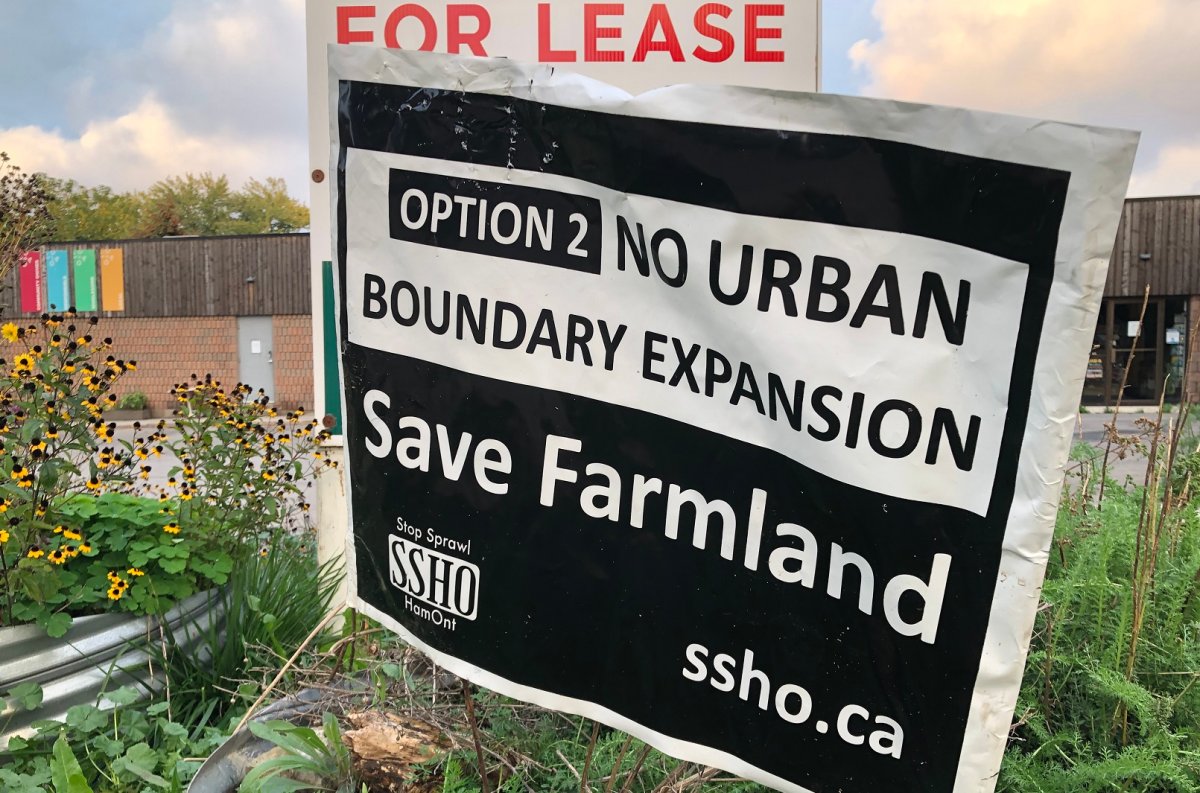A Hamilton city councillor is pushing back against a new poll that claims the “silent majority” of Hamiltonians want to expand the urban boundary.

In a tweet, Ward 8’s John-Paul Danko referred to a new Nanos Research poll — funded by the Realtors’ Association of Hamilton-Burlington (RAHB), the Ontario Real Estate Association (OREA), and the West End Home Builders’ Association (WEHBA) — as “a clear example of how the development industry is able to buy public policy.”
The Nanos poll of 700 randomly selected residents, surveyed by phone between Aug. 24 and Sept. 18, found that 38 per cent of respondents want the city of Hamilton to expand the urban boundary into farmland.
Another 32 per cent don’t want the urban boundary to be expanded, 22 per cent want to slow down growth entirely, and eight per cent were unsure.
The survey also found that 76 per cent of respondents would consider leaving Hamilton if their “preferred type of housing” was not within their price range.
“If Hamilton does not provide the appropriate supply of housing, we’re simply going to displace people elsewhere,” said Mike Collins-Williams, CEO of the WEHBA.
The Nanos poll also reports that only one in five respondents actually recalled receiving the city’s mailed-out survey about urban boundary expansion.
Chief data scientist Nik Nanos referred to respondents who didn’t fill out the city’s survey as the “silent majority” that will leave Hamilton if they can’t afford housing in the city.
“The silent majority … will make those tough decisions to leave Hamilton if they can’t afford to pay the rent and get the house that they need. And it’s not because they don’t like Hamilton, it’s because they have no choice.”
Between June 22 and July 23, the city received more than 18,300 responses to its urban boundary expansion survey through both mail and email.

Get breaking National news
Of those, 90.4 per cent (16,636 respondents) opposed expanding the boundary, 5.9 per cent (1,088 respondents) were in favour, and 3.6 per cent (663 respondents) chose “other.”
A staff report to city councillors indicates that a total of 215,822 surveys were distributed to Hamilton households, but also acknowledges that some residents may have mistaken the survey as a flyer and thrown it out.
In an interview with Global News, Coun. Danko referred to the city’s survey’s level of engagement as “unprecedented” and said the opposition to growth through sprawl goes beyond the responses it received via mail and e-mail.
“Throughout the city, we’re seeing lawn signs for ‘stop sprawl,'” Danko said. “These are individual residents who are taking the time out to be engaged and become informed on this project. And Hamilton residents are extremely knowledgeable and engaged on this topic.”
The provincial government has ordered municipalities in the Greater Toronto-Hamilton Area to respond to a “land needs assessment” as part of a growth planning initiative that suggests Hamilton’s population will increase by nearly 238,000 residents to a total of 820,000 by 2051.
Collins-Williams said the Nanos poll suggests a “small urban boundary expansion” is needed to accommodate that level of growth.
He pointed to 75 per cent of respondents who said they would prefer to live in a single detached family home as an indicator that focusing only on intensification won’t meet residents’ needs.
“I think the poll results … clearly indicate that a significant portion of Hamiltonians still want a little bit of elbow room. They still want the opportunity to have a patch of green grass, a backyard, perhaps a barbecue, for more family-oriented housing.”
Even with a small urban boundary expansion, the city will still need to increase its intensification by 60 per cent over the next three decades.
Danko said increasing the housing supply by that much within the existing boundary means Hamilton needs more “gentle density” housing — things like secondary suites and laneway housing.
“The fact is that entry-level affordable housing — those two or three-bedroom, urban-type developments — are not available in the city of Hamilton because the development industry is not building that kind of development.”
He added that the existing housing affordability crisis is about more than supply and expanding the urban boundary isn’t going to address the other factors that have contributed to the crisis.
“That is a result of 20 years of record-low interest rates. It’s a result of a lack of choice for residents to be able to select more modest housing options that suit their families. It’s a result of investment in real estate, which drives up prices. And frankly, it’s resulting in a broken bidding system where you see houses listed for $500,000 that end up sending selling for $800,000. That should not happen in a healthy market.”
Environmental and housing advocates have delegated at city meetings, urging councillors to vote against expanding the urban boundary into so-called “whitebelt lands” that have rich agricultural potential, including part of Stoney Creek known as the Elfrida Growth Area.
Councillors were initially scheduled to hear from staff during a special meeting on Oct. 25 about the findings of the urban boundary expansion survey, as well as the final land needs assessment report.
That meeting has been pushed back to Nov. 9.


_848x480_1397405763961.jpg?h=360&w=540&crop=1&quality=70&strip=all)



Comments